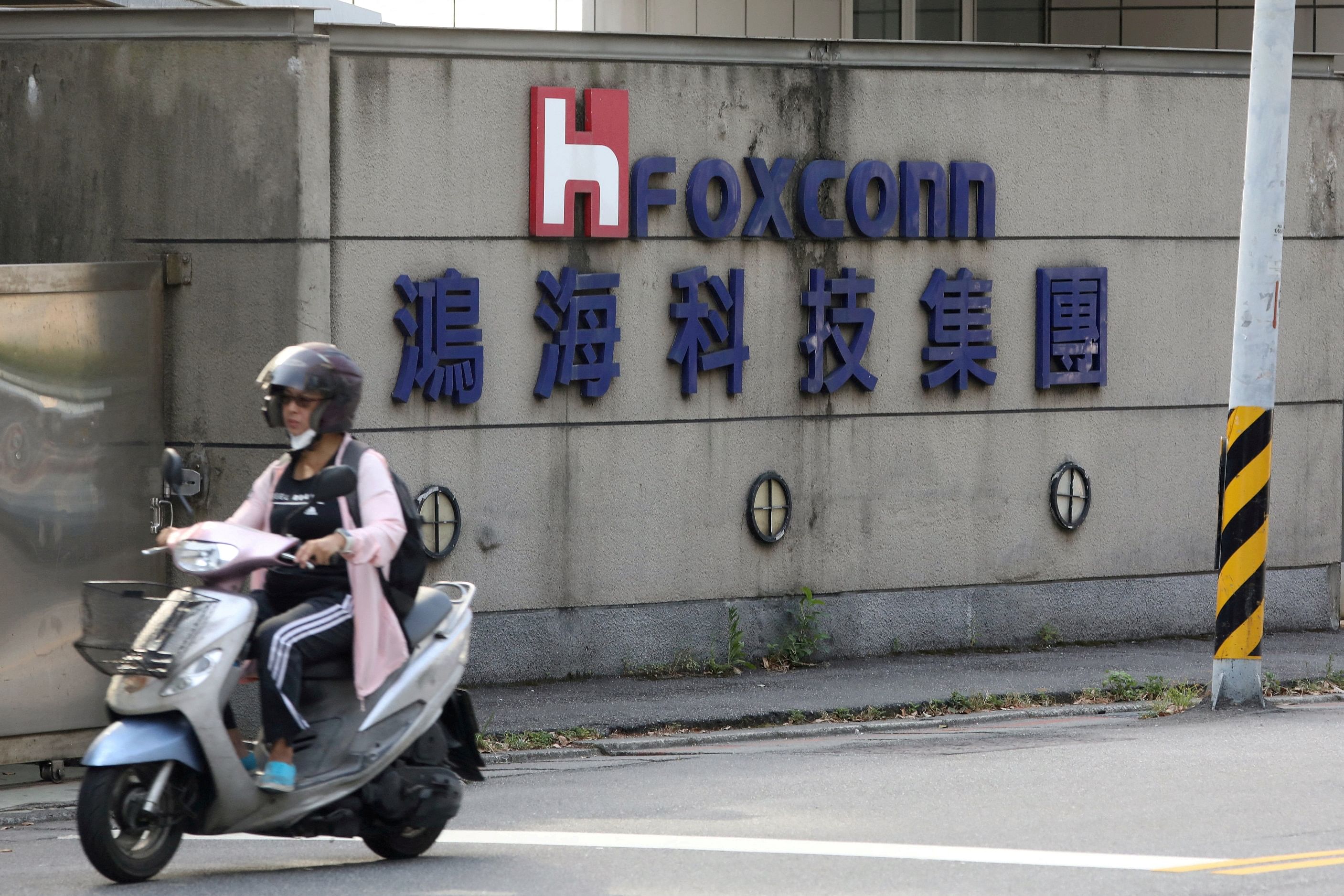NEW DELHI/BENGALURU - India is fast emerging as a competitive destination for electronics manufacturers exiting China, with the world's largest such manufacturer Foxconn entering a US$19.5 billion (S$27.9 billion) joint venture with India's Vedanta Group to make semiconductors in the western state of Gujarat.
While China remains the global hub for electronics production, companies are looking for alternative locations after the country's strict Covid-19 lockdowns disrupted production.
China's political tensions with the United States have also led businesses to adopt a "China Plus One" strategy of diversifying supply chains from Asia's biggest economy alone to countries such as Vietnam, Mexico and India.
Companies like Apple, Samsung and Google are taking small but firm steps towards India, enticed by new incentives for electronics production as well as the massive domestic smartphone market that is the second-largest in the world.
On Wednesday, the government announced that it would fund 50 per cent of the project costs for a range of semiconductor fabrication plants. It also raised the fiscal support for compound semiconductors, packaging and other semiconductor facilities to 50 per cent, from 30 per cent earlier.
This is on top of 2.3 trillion rupees (S$40.4 billion) of initiatives unveiled in December 2021 to position India as a global hub for electronics system design and manufacturing. This includes a 760-billion-rupee push for a semiconductor and display manufacturing ecosystem.
At a recent press conference, Minister of State for Electronics & Technology Rajeev Chandrasekhar told The Sunday Times that in "the post-Covid-19 world of shifting global value chains" for electronics, companies "look for viable, sustainable bases to manufacture products".
"That is exactly what India delivers," he added.
While home to many semiconductor research and development units owned by top global firms, India lacks large-scale semiconductor manufacturing facilities.
It has, however, seen significant growth in the wider electronic products industry, with its domestic production in electronics increasing from US$29 billion in 2014-15 to US$75 billion now.
Conglomerates such as the Reliance and Tata groups are keen to corner a greater share of this growing market as well as export electronic products through joint ventures with foreign partners.
India's vast supply of reasonably cheap labour and its diversified industrial base are also attractive to global companies.

The Vedanta-Foxconn semiconductor and integrated display fabrication plants that will be set up over the next two years in Gujarat's Ahmedabad district will employ 100,000 people. Oil and mining conglomerate Vedanta has a 60 per cent stake in the pact with the Taiwanese electronics giant announced mid-September.
Backed by government incentives, mobile phone production more than doubled in value from April 2021 to March 2022, propelling India to become the world's second-largest manufacturer with a total production worth more than 52.77 billion rupees.
Apple is expanding its iPhone production in India, where Taiwan's Foxconn, Wistron and Pegatron are expected to contract manufacture 5-7 per cent of all iPhones sold globally in 2022.
This is up from India's 3 per cent contribution in 2021 and under 1.5 per cent in 2020. JP Morgan analysts estimate that Apple could expand this to 25 per cent of all iPhones by 2025.
Over 95 per cent of iPhones sold globally are made in China, but Apple has been reducing this since the pandemic.
Foxconn's existing India units in Chennai began making Apple's flagship iPhone 14 this year just six weeks behind China.

Apple analyst Ming Chi Kuo said in a tweet this indicates that production of the latest iPhones in India could start simultaneously by 2023.
Some 11-12 million iPhones are forecast to be exported from India in 2022, up from 7.5 million in 2021. Local-made iPhones will also meet 85 per cent of domestic demand, against just 10-15 per cent in 2021.
India's biggest conglomerate Tata is said to be in talks with Wistron, which entered the country in 2017, to assemble iPhones. Should it bag the deal, it would be the first Indian company to build iPhones.
Google has solicited bids from Indian producers to assemble between 500,000 and a million units of its Pixel smartphone, which is almost entirely made in China now.
Samsung, which is the world's biggest smartphone seller, set up one of its largest factories in Noida, Uttar Pradesh, in 2018 that makes 120 million units a year.
It had shifted its display manufacturing unit from China to Noida in 2021 and shut the last of its smartphone factories in China in 2019.
Chinese smartphone makers, too, have offshored some of their manufacturing to India, where they dominate almost 80 per cent of the market. Xiaomi - the market leader in India - and its rivals Oppo, Vivo and OnePlus assemble a number of their handsets in the country.
Amazon's Fire TV digital media players are produced in Chennai by a Foxconn subsidiary.
India plans to expand domestic electronics manufacturing from US$75 billion now to US$300 billion by 2026. The government also has an ambitious target of ramping up its annual electronics exports from the current US$16 billion to US$120 billion by 2026.
India, however, must compete with more experienced players like Vietnam that exported US$100 billion electronic products in 2021.
Dr Deepak Mishra, director and chief executive of the Indian Council for Research on International Economic Relations (ICRIER), told The Straits Times that Vietnam's success in electronics manufacturing is a reflection of its wider success at industrialising despite global headwinds.
Vietnam had embraced trade liberalisation "with gusto", he said, carrying out domestic reforms through deregulation, lowering the cost of doing business, and investing heavily in people and infrastructure.
The Indian government's strong desire to produce as many vital electronics components domestically as possible continues to hobble manufacturing, which is reliant on the import of cheap components from abroad, especially China.
The country has lagged behind nations such as Vietnam in developing a strong manufacturing base for electronics due to its regulatory red tape, unpredictable policy turns, high cost of production and taxes, poor infrastructure and logistics, as well as a dearth of skilled labour and lack of financial support.
While India's trade policy has been "rather mixed", marked by the signing of free trade agreements while simultaneously increasing in custom duties across a wide range of products, Dr Mishra said the overall results have been positive, with the production and exports of electronics on a steady rise.
Mr Pankaj Mohindroo, chairman of the India Cellular & Electronics Association, said the significant jump in mobile phone manufacturing is a "vindication of things working out well".
But he added that India has to sharpen its future strategy. "It's not the game of squash or a game of tennis - you are playing a game of golf, which is a long haul.
"Chip away at your disabilities, make the environment more inviting, make sure that the global value chains are well settled here and expanding, build Indian global champion companies and the supply chain."
'First globalise, then localise'
An Indian Council for Research on International Economic Relations report released in August suggested India take a leaf out of Vietnam's book and rewire its strategy to boost electronics exports.
Simultaneous attempts to export at scale and increase the share of domestic value addition are unlikely to succeed without a competitive domestic ecosystem of ancillary suppliers in India.
The country relies on cheap imports of components, especially from China, but the government's attempts to reduce dependence on its rival as well as increase its revenue by raising import tariffs on these items have curtailed exports of finished electronics goods.
Proposing a "first globalise, then localise" approach, the report suggested the country temporarily suspend requirements that force manufacturers to source components domestically, and remove duties on intermediate items.
It also suggested accelerating economic integration through free trade agreements, to enable electronics manufacturers in India to source the cheapest inputs from anywhere in the world.
Once global scale is achieved, the focus can then shift to encouraging greater use of local inputs, it added.
The research council also recommended that India should immediately start building up an ecosystem of ancillary suppliers through helping with technology transfer and improving the business climate, among other long-term measures.

